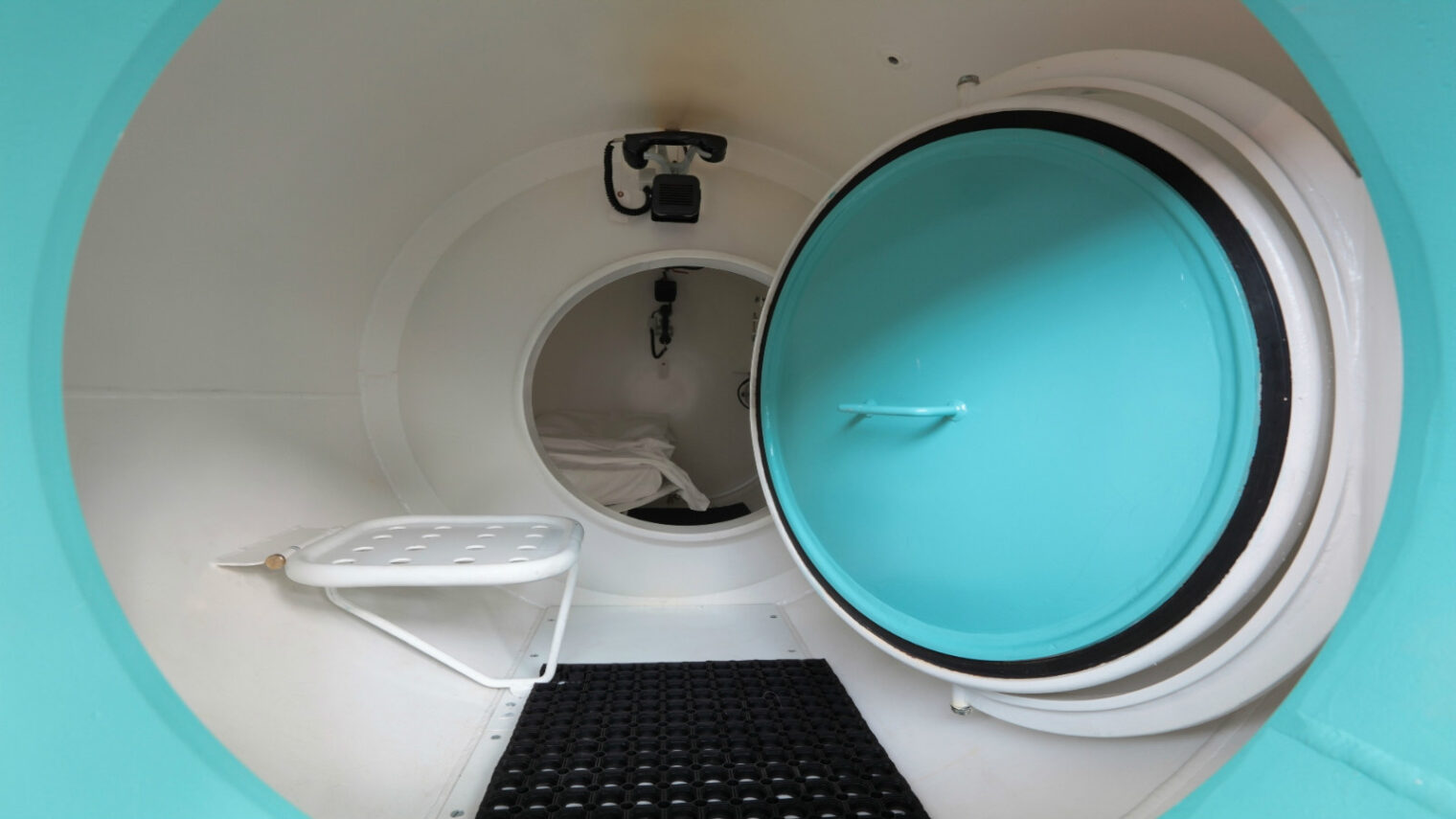Hyperbaric oxygen chambers are used in many countries to treat patients with embolisms, burns, carbon monoxide poisoning and decompression sickness. Now, an Israeli study shows that the high-pressure pure oxygen treatments are also helpful for people who suffer from fibromyalgia, a chronic pain syndrome affecting an estimated one in 70 Americans, most of them women.
The study, published recently in the journal PLoS ONE, describes how the researchers were able to map the malfunctioning brain regions responsible for the syndrome, and used hyperbaric oxygen treatment to drastically reduce, or even eliminate, the need for pain medication.
“As a physician, the most important finding for me is that 70 percent of the patients could recover from their fibromyalgia symptoms,” said Dr. Shai Efrati, director of the Sagol Center for Hyperbaric Medicine and Research and head of R&D at Assaf Harofeh Medical Center in Tzrifin, and a faculty member at the Sagol School of Neuroscience at Tel Aviv University (TAU).
Fibromyalgia can be triggered by head trauma, a neurological infection or severe emotional stress, and causes symptoms such as musculoskeletal pain, fatigue, memory loss and mood swings. Few therapies have been found to be effective in assuaging its symptoms.
“It means that brain repair, including neuronal regeneration, is possible even for chronic, long-lasting pain syndromes.”
Efrati and his team exposed study participants to two months of hyberbaric oxygen therapy. They found significant changes in the brain activity and symptoms of 70 percent of participants.
The trial involved 60 women who had been diagnosed with fibromyalgia at least two years earlier. Half of the 48 patients who completed the therapy received 40 hyperbaric oxygen treatments — 90-minute treatments exposing patients to pure oxygen at twice the atmospheric pressure, five days a week over the course of two months.
Not just treating symptoms
The successful treatment enabled patients to drastically reduce or even eliminate their use of pain medications. “The intake of the drugs eased the pain but did not reverse the condition. But hyperbaric oxygen treatments did reverse the condition,” said Efrati, who added that the findings are significant enough to warrant further study.
“Hyperbaric oxygen treatments are designed to address the actual cause of fibromyalgia — the brain pathology responsible for the syndrome,” he said. “It means that brain repair, including neuronal regeneration, is possible even for chronic, long-lasting pain syndromes, and we can and should aim for that in any future treatment development.”
The researchers did find some discrepancies among patients depending on the origin of the condition. When fibromyalgia was triggered by a traumatic brain injury, for example, they witnessed a complete resolution without any need for further treatment. But when the trigger was attributed to other causes, such as fever-related diseases, patients required periodic maintenance therapy.
The researchers are continuing to conduct comprehensive studies on the renewal of brain tissue under hyperbaric conditions.
A previous study led by Efrati and the late Prof. Eshel Ben-Jacob, published in the same journal in 2013, showed that hyperbaric oxygen therapy increased neuronal activity in post-stroke patients and may be effective in treating and preventing many other brain disorders.
The current study was carried out by Efrati, Ben-Jacob and scientists affiliated with TAU, Assaf Harofeh Medical Center, Ben-Gurion University, Soroka Medical Center in Beersheva, Tel Aviv Sourasky Medical Center, Ashkelon Academic College, Kaplan Medical Center in Rehovot and Rice University in Texas.














